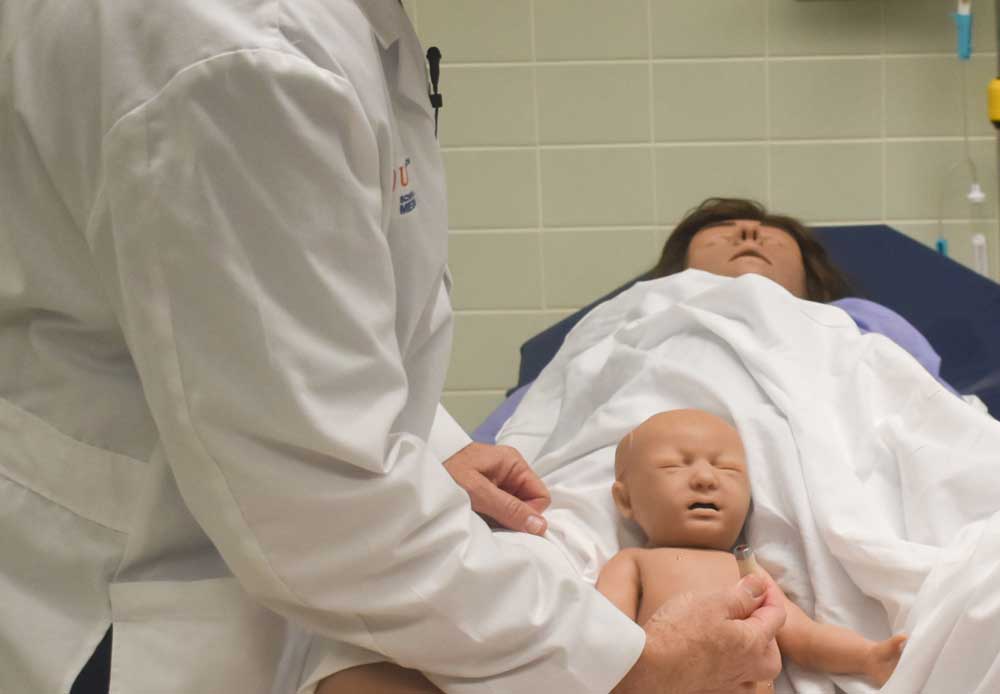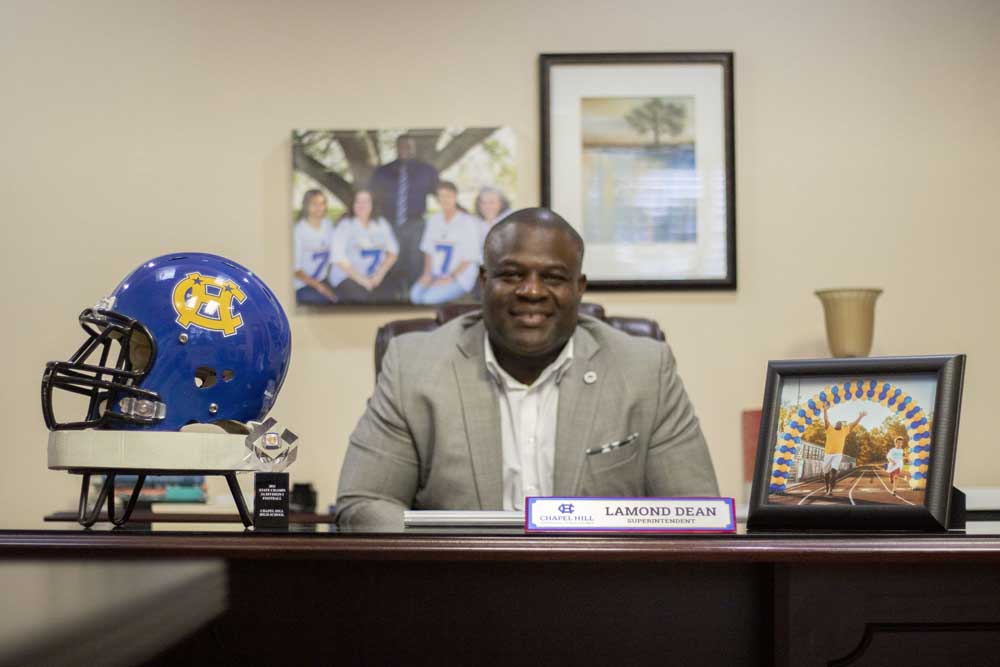UT Tyler School of Medicine offers hands-on training through simulation lab
Published 5:45 am Saturday, July 27, 2024

- A birthing manikin has been used 14 times in one day for training family medicine residents. (Raquel Villatoro/Tyler Morning Telegraph)
At the UT Health Science Center, four former operating rooms are used for training UT Tyler School of Medicine students through simulations.
Students check vitals, work together and learn while making mistakes along the way to make them better doctors in the future. This is important so when students interact with real patients they are prepared.
“It really augments what they can see and do. So they become better clinicians,” said Dr. Jeffrey Pearl, UT Tyler School of Medicine Assistant Dean of Structure and Simulation. “Some things they don’t see very often and we can make a simulation of that. So when they do see it once or twice a year, they’re a little more comfortable.”
The lab features robotic manikins that can give birth, speak, experience seizures, heart attacks, and strokes, and can be used to practice an ultrasound, intubation, or inserting an IV or chest tube. Trauma manikins can bleed and simulate real injuries for medic, nurse and physician training.
For students on call, whether first-year or beyond, they are better prepared to handle a patient with shortness of breath or chest pain. In cases where the student may be on call at night, they most likely will be handling the patient by themselves. This early practice helps them know how to respond, Pearl said.
UT Tyler School of Medicine houses multiple simulations and manikins so students can learn about various situations at the Simulation in Medicine and Immersive Learning Experience (SMILE) Center. They have a labor and delivery simulation. The family medicine students use this manikin often; the ‘mother’ has given birth 14 times in one day! The center also features an ultrasound machine which shows a beating heart. There are trauma manikins, including one that responds when asked questions
Studies have shown simulations help reduce errors, Pearl said. Students learn to communicate with each other. They have a leader, someone who performs tasks, and someone who conducts the physical and takes the patient’s history. They students are taught close group communication, which originated from the operating room, airline and military industry, Pearl added.
The leader will say, “starting IV.” When the IV is in, the leader will say, “IV is in.” In this way, each step is explained to ensure clear communication.
“Everybody knows what’s going on so you don’t end up losing focus of what your job is,” Pearl said. “Everybody has information. Even though there’s a leader, any one of us can come up with an idea. Did we think of this? Or are we missing this diagnosis?”
Pearl enjoys seeing the “light bulb go off” as students learn how to work with patients through the simulations.
Instead of sitting in a classroom, UT Tyler School of Medicine students start seeing patients early on. Students receive EMS certification during their first four weeks in the medical school.
“Our goal is really to turn out the best clinicians to help all patients, especially the complex issues we have in East Texas, and really compassionate and very competent physicians, treat the whole patient, the families, that also are very good at what they do. And the simulation is really a key to that,” Pearl said.
The curriculum is integrated and focuses on active learning. Faculty knows what the students are learning. They work to ensure they are teaching them what they need to know for their exams.
Faculty might bring students to the SMILE Center to show them how to do X-rays, ultrasounds of the lung and chest cavity or do a microsimulation with a patient with shortness of breath.
“I remember seeing in med school and doing a lot and had no idea why it’s important,” Pearl said. “Later, you realize when you start dealing with patients, you actually need all of this. But here, they’re going to see that right away. And I think that’s going to make it stick in their brain longer. And they won’t forget some of the foundational stuff because it has an application of purpose, they understand why they need to know.”
Through the simulations, students learn to pay attention to vital signs, how to do lumbar puncture and how to identify arrhythmia.
Students can practice lumbar punctures 10 to 20 times on a manikin and see VR where the spine is superimposed on the manikin, according to Pearl. This is different than when Pearl was training. He had to learn doing lumbar punctures on a patient for the first time.
“The patient comes first and that’s the most important,” Pearl said. “But as a student or a resident having practiced in a low-risk environment where I missed, it’s not a problem. It’s going to make them more comfortable and less nervous when they actually do it.”
In addition to training students, they have brought providers from rural areas to train at the SMILE Center. They have held about three to four advanced trauma life support events and taught rural providers how to intubate, according to Pearl.
In East Texas, people near the main hospitals such as Christus or UT Health can receive great care. However, for those in rural East Texas, getting there is a challenge. For emergency room doctors in rural areas, having this kind of training helps them be prepared for when they see sick patients, Pearl said.
“If you’re having a stroke three hours away in a rural area with nobody there, that’s a problem,” Pearl said. “If you need some advanced care, they may not see something very often there. So really, what we want to do is get providers from the rural areas in here to train.”
For more information on the UT Tyler School of Medicine, visit https://www.uttyler.edu/academics/colleges-schools/medicine/.






